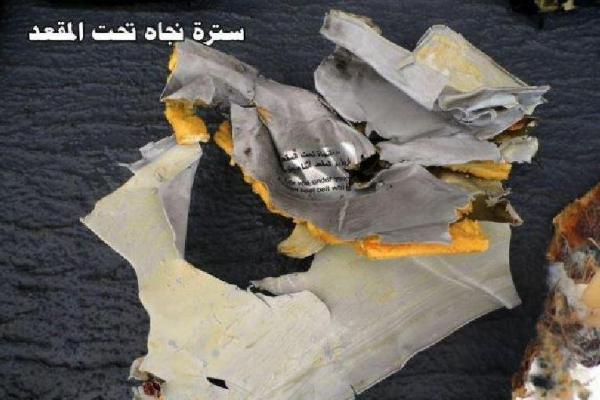
CAIRO, May 24 (UPI) -- Investigators are examining a new debris field in the Mediterranean Sea that might hold additional clues to the cause of EgyptAir Flight 804's demise, officials said Tuesday as they continue to analyze data from the jetliner.
Egyptian authorities have sent wreckage from the 12-year-old Airbus 320 to a criminal forensic lab for further technical analysis, a new progress report from investigators said Tuesday.
The physical evidence indicates that the jet may have broken apart while in flight, as the fact that wreckage is strewn over a large area is suggestive of that scenario. Egyptian authorities, though, did not specifically address those indications in Tuesday's report.
Teams are also wading through additional debris found by searchers in a U.S. Navy P-3 Orion, who were scouring the eastern Mediterranean on Monday. The newly found wreckage spreads over a 3 1/2 mile radius, officials said.
So far, only small fragments of human remains have been found, but no intact bodies -- fueling speculation that a bomb may have ripped apart the jetliner. However, there is reportedly disagreement among experts on this point. Some have cited telltale signs of a blast, possibly a bomb, while others say the evidence so far indicates only that there was some type of fire on board.
"Any high velocity impact leads to defragmentations, and this is not indicative of what caused the accident," EgyptAir Vice Chairman Ahmed Adel told CNN Tuesday.
"Let's not jump to conclusions."
Officials previously said the plane sent automated messages that show a smoke detector near the front of the plane went off before the jet disappeared from radar screens.
Also Tuesday, Adel said officials have started collecting DNA samples from relatives of the passengers to aid in the identification process.
Flight 804 crashed after leaving Paris for Cairo on May 19. All 66 people aboard are presumed dead.
Authorities are still searching for the jetliner's "black boxes" -- the flight data recorder and cockpit voice recorder -- beneath the sea waters, where the boxes are presumably emitting a beacon signal to help investigators locate them. The beacons should last for 30 days after the crash, officials say.






